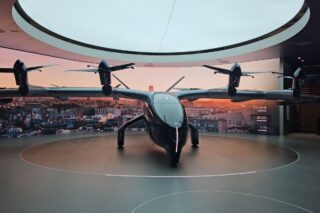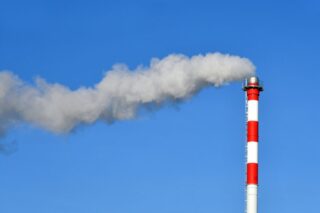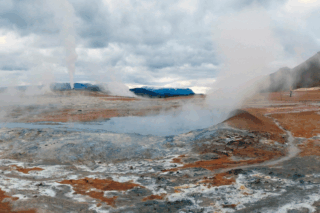What does the digital revolution mean for the mining sector? How do digital applications affect professions as old as geologists and metallurgists working in remote areas of Africa, Australia or Indonesia? At first glance, the concept of industry 4.0 seems far from the mining industry. But the digital revolution is underway. The French group Eramet has teamed up with drone manufacturer Delair to produce the first digital twins for its sites. Welcome to mining 4.0.
When we talk about the digital revolution and industry 4.0, we automatically think of manufacturing, aeronautics and the automotive sector, but not necessarily of mining. And yet, this sector is also participating in the revolution.
Drones have been flying weekly over the Tiébaghi mine, owned by SLN/Eramet, in northern New Caledonia since last January. The goal is to collect data on the deposits in order to establish a digital twin of the site, Ludovic Donati, Chief Digital Officer at Eramet explains:
Thanks to drones and photogrammetry, we collect data on our mines, which allows us to have a real-time view of what is happening on our sites. It is a real accelerator to better manage our supplies.
Until recently, the evaluation of ore stocks in Tiébaghi required two to three days of work by a team of surveyors every month. It was slow, expensive and imprecise.
With a drone, we can have an overview of the entire mine in less than two hours, from the level of our mineral stocks to the state of our roads. Knowing in real time the state of the roads makes it possible, for example, to optimize the fuel consumption of trucks and to ensure that truck drivers work safely.

The Eramet group has chosen Delair technology to achieve its digital transformation. The Toulouse-based company provides both the drones (quadcopters that cover a small area and report data quickly, and the flying wings that cover a larger area) and the cloud platform that processes the collected data.
While drones are the essential tool for reporting information, the main advantage of Delair’s technology lies in the processing and analysis of this information a posteriori, says Thomas Nicholls, Chief Marketing Officer at Delair.
Eramet sends the drone to take pictures of their mine. These photos are then transmitted to our cloud platform which transforms them into a 2D and 3D digital model. Then our artificial intelligence algorithms process this data and are able to detect whether it is roads or minerals, what the stock status is, etc. This technology allows the company to make better decisions.
These AI algorithms make it possible for the manager of the Tiébaghi mine and a manager at the Paris headquarters to know the exact volume of an asset on a specific area of the New Caledonian site in real time.
From test to done deal
The Delair technology – drone and data analysis – is currently being tested on the New Caledonian mine, but the results obtained have been sufficiently encouraging for Eramet to sign a framework contract with the Toulouse-based manufacturer. Nine drones will be deployed by the end of the year at the other Eramet Group sites (in New Caledonia, Gabon and Senegal). The objective is to cover 300,000 hectares per year.
The digital transformation will allow us to connect geology and economy. We will be able to ensure the digital continuity of deposits for customers and thus improve the traceability and quality of our products.
Data analysis also allows Eramet to see new possibilities. The group’s data scientists are already working on AI algorithms that can generate predictive models, according to Donati:
The next step is real-time knowledge of the soil and subsoil. Today, our geologists are working with drill holes to find out what we have in our deposits, whether it is nickel, manganese or mineralized sands. Tomorrow, they will know exactly what is being extracted in real time. They will be able to perform operational simulations more quickly. The ultimate goal is to produce better, handle less land and extract the right amount of minerals with the right grade in the right place.











